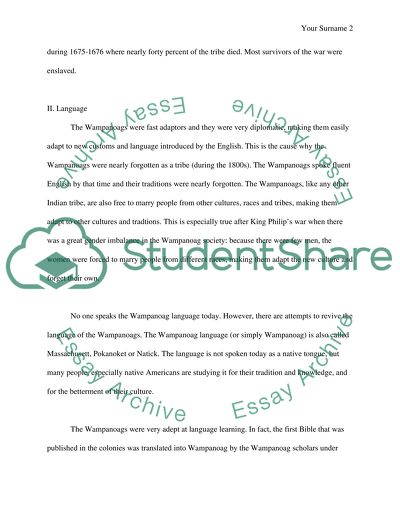Cite this document
(“Wampanoag: The People of Dawn Research Paper Example | Topics and Well Written Essays - 1500 words”, n.d.)
Retrieved from https://studentshare.org/anthropology/1453751-research-paper-about-indian-tribe
Retrieved from https://studentshare.org/anthropology/1453751-research-paper-about-indian-tribe
(Wampanoag: The People of Dawn Research Paper Example | Topics and Well Written Essays - 1500 Words)
https://studentshare.org/anthropology/1453751-research-paper-about-indian-tribe.
https://studentshare.org/anthropology/1453751-research-paper-about-indian-tribe.
“Wampanoag: The People of Dawn Research Paper Example | Topics and Well Written Essays - 1500 Words”, n.d. https://studentshare.org/anthropology/1453751-research-paper-about-indian-tribe.


